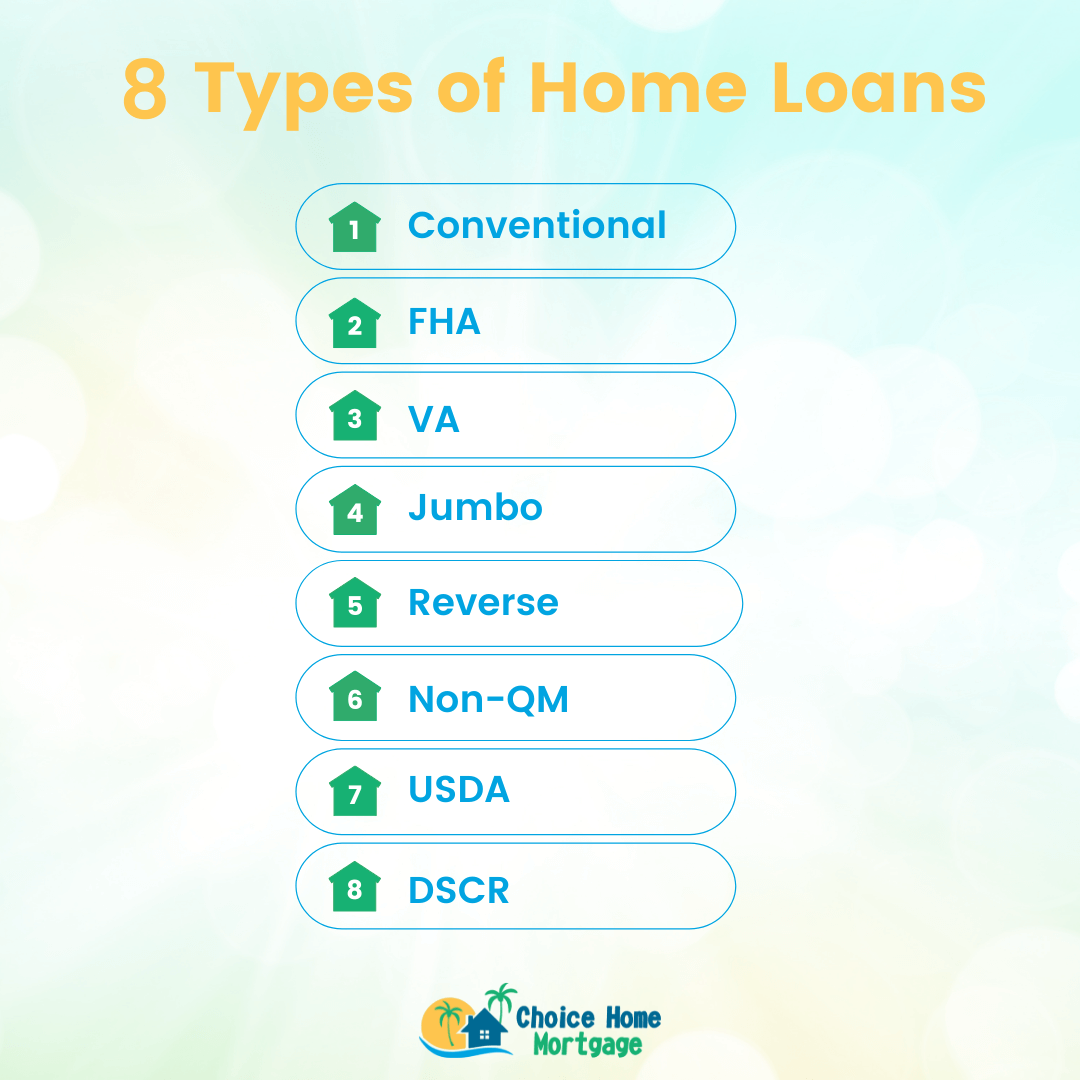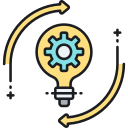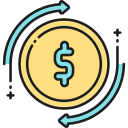Table of Contents
If you’re in the market to purchase or refinance you should know you have many loan options available to you. Whether you have perfect credit or just okay credit, a lot of debt or a little, or a large down payment or small, there are options for everyone.
Here’s what you must know.
Conventional Mortgage
The conventional mortgage is your standard mortgage. It’s for borrowers with good credit and a low debt-to-income ratio. You can put down as little as 3% on the home if you’re a first-time homebuyer or 5% if you’ve owned a home before.
Conventional loans aren’t government-backed and require Private Mortgage Insurance if you put down less than 20%. You pay PMI until you owe less than 80% of the home’s value, at which point you can request to cancel it.
By law, lenders must cancel PMI once you owe less than 78% of the home’s value if you didn’t request it beforehand.
Conventional mortgages are great for purchases and refinance. Here’s how to qualify.
Qualifying for a Conventional Mortgage
To qualify for a conventional mortgage, you must meet the following:
- Minimum 660 credit score (higher is always better)
- Maximum 36% – 43% debt-to-income ratio
- Stable income and employment for the last 2 years
- Proof of your income with paystubs and W-2s or tax returns if self-employed
- No recent bankruptcies or foreclosures
- At least 3% or 5% to put down
- Proof you have the assets to make the down payment and cover the closing costs

FHA Loans
FHA loans are a government-backed program. This doesn’t mean you go through the FHA to get the loan, though. You still apply with a lender, but they must be FHA-approved.
The FHA sets the guidelines FHA lenders must use to qualify you for the loan. If you meet the FHA guidelines, the FHA will guarantee the loan for the lender. This means if you default on the loan, the FHA will pay the lender back the money they lost.
FHA loans require just 3.5% down on the home and some borrowers can even use 100% gift funds for the down payment. They also have more lenient credit and debt-to-income ratio guidelines.
Like conventional loans, FHA loans require mortgage insurance, but you can’t cancel it. You’ll pay MI for the life of the loan. FHA loans have an upfront mortgage funding fee of 1.75% of the loan amount and 0.85% of the loan amount annually (divided into 12 monthly payments).
FHA loans are great for borrowers with less-than-perfect credit as they have more lenient guidelines than conventional loans. You can use FHA loans for a purchase or refinance.
Qualifying for an FHA Loan
To qualify for an FHA loan, you must meet the following:
- Minimum 580 credit score
- Maximum 43% – 50% debt-to-income ratio
- 5% down with a 580+ credit score
- 10% down with a 500 – 579 credit score (in some situations)
- Stable income and employment for 2 years
- Proof of your income with paystubs and W-2s or tax returns if you’re self-employed
- No recent bankruptcies or foreclosures
- Proof of assets for the down payment and closing costs or proof of gift funds approved by the underwriter
- Proof you’ll live in the property as your primary residence
USDA Loans
USDA loans are also government-backed loans, but they are for low to moderate-income borrowers buying in a rural area. The USDA has much looser guidelines regarding what is considered rural, which you can see here.
Like FHA loans, the USDA sets the guidelines for USDA loans, but you get the loan from a USDA-approved lender. If you meet the guidelines, you can get a USDA loan which doesn’t require a down payment and has flexible qualifying requirements.
USDA loans also require mortgage insurance for the life of the loan, but the rates are much lower than traditional loans. Borrowers pay 1.0% of the loan amount upfront and 0.35% of the loan amount annually. Like FHA loans, you cannot cancel the mortgage insurance even when you owe less than 80% of the home’s value.
USDA loans have slightly stricter qualifying guidelines than FHA loans, but they are still flexible.
Eligibility for a USDA Loan
USDA loans have one unique aspect – you must be eligible for it before you see if you qualify. Eligibility is based on your total household income, not just your income. The USDA offers the programs to families with total household income lower than 115% of the area’s average income.
You can click here to determine if your household qualifies.
Qualifying for a USDA Loan
To qualify for a USDA loan, you must meet the following:
- Minimum 640 credit score
- Maximum 41% debt-to-income ratio
- No down payment required
- Stable income and employment for the last 2 years
- Proof of income with paystubs and W-2s or tax returns if you’re self-employed
- No recent bankruptcies or foreclosures
- Proof you’ll occupy your home as your primary residence
- Proof of any assets you’ll use for the down payment (optional) and your closing costs
VA Loans
VA loans are loans for veterans of your military. If you served at least 90 days during the war or 181 days during peacetime in any military branch or 7 years in the Reserves or National Guard, you may be eligible.
VA loans don’t require a down payment, and they have flexible underwriting guidelines for veterans that served our country. Unlike FHA loans, VA loans don’t require mortgage insurance, but most veterans pay a 2.3% upfront funding fee.
VA loans are a great option to help veterans own a home much sooner with the no down payment requirements.
Qualifying for a VA Loan
Qualifying for a VA loan is simple for veterans. Because the VA guarantees the loans for VA lenders, they can offer these simple guidelines:
- No minimum credit score requirement, but most lenders want at least a 620
- Maximum 43% debt-to-income ratio (some lenders go up to 50%)
- No down payment required
- Stable income and employment for the last 2 years or at least a written job offer with a job starting in the near future
- No recent bankruptcies or foreclosures
- Proof you’ll occupy your home as your primary residence
- Proof of any assets for the down payment (optional) and your closing costs
- Proof of your eligibility for a VA loan (most lenders can help you get this)
Jumbo Loans
Jumbo loans are loans that exceed the conforming loan limit. The loan limits change every year, but for 2022, conventional limits are $647,200. If you must borrow more than that, you’ll need a jumbo loan.
Jumbo loans are non-conforming which means they don’t have any specific guidelines that all lenders must follow because lenders hold these loans on their books. There isn’t any government-backing or a federal agency like Fannie Mae or Freddie Mac buying the loans.
Each lender sets their own guidelines, but there are some guidelines most lenders have in common.
Qualifying for a Jumbo Loan
Jumbo loan qualifications vary by lender, but here’s what you can expect:
- High credit scores of at least 700
- Maximum 43% debt-to-income ratio
- 20% – 30% down payment
- Stable income and employment for at least 2 years
- No recent bankruptcies or foreclosures
- Proof of the assets you’ll use for the down payment and closing costs
Non-QM and DSCR Loans
Some borrowers can’t qualify based on their paystubs or tax returns. Whether you don’t receive paystubs, or your tax returns show so many write-offs that you have negative income, you may not qualify for conventional financing, but non-QM loans may be an option.
Examples include bank statement loans which allow you to qualify for a mortgage with your bank statements instead of paystubs or tax returns. Other options include DSCR loans which are for real estate investors. If you already have leased properties, you can qualify for a new loan based on the annual net rental income rather than your employment income.
Non-QM loans have higher interest rates and fees but are good for borrowers with less than traditional qualifying factors that wouldn’t allow them to qualify for a conventional loan.
Non-QM loan requirements vary by lender, but here are some of the common requirements:
- 640+ credit score
- Stable income (no matter how you verify it)
- No recent bankruptcies or foreclosures
- Higher down payments (20%)
- Low debt-to-income ratios
Reverse Mortgage
A reverse mortgage allows you to tap into your home’s equity while you still live in the home. Unlike a traditional mortgage, though, you don’t have to make payments. Interest still accrues, but payments aren’t due until you either move out of the home or pass away.
Your only obligation when you have a reverse mortgage is to keep up with your real estate taxes, home insurance, and home maintenance. A reverse mortgage is for homeowners ages 62 or older and the older you are, the more you can borrow against your home’s equity.
Homeowners are required to take reverse mortgage counseling before taking out a reverse mortgage to ensure you understand the loan and how it works, but it’s a great way to use your home’s equity while you are alive and still live in your home if you choose to age in place.
Loan Options
Each of the loans above have options that you can choose to find the loan that’s most affordable for you.
30-Year Fixed Loan
A 30-year fixed loan is the most common mortgage loan. Your payments are spread out over 30 years, which makes the principal payment the lowest out of all loan options. The interest rate on 30-year fixed loans is the highest out of any loan program, but they are still usually competitive.
With the 30-year fixed rate loan your rate never changes and neither does your payment. You keep the same payment and just pay more toward the principal as you get further into the loan term. At the start of the term, you pay much more interest than principal, but the interest charges decline as you pay the mortgage balance down.
15-Year Fixed Loan
The 15-year fixed loan is another popular option, but the payments are higher. You’ll pay more toward principal than interest on this loan since you have half the time to pay it off in full versus a 30-year loan.
15-year fixed loans have a lower interest rate because they aren’t as risky for lenders, but you must be able to afford the higher payment. Like the 30-year fixed rate loan your rate and payment never change over the 15 years.
Adjustable-Rate Loan
The adjustable-rate loan offers an attractive interest rate, usually lower than any fixed rate, but it’s only temporary.
ARM loans have a fixed rate for the introductory period and then they adjust every year on the anniversary date of your mortgage.
You can get adjustable-rate loans in 3-, 5-, 7-, or 10-year increments. The shorter your introductory period is, the lower the interest rate you’ll get to start the loan. Your adjusted interest rate is dependent on the loan’s margin and index.
The lender will choose an index to base your rate on, such as LIBOR or the Prime rate. They also assign your loan a margin, or the amount they’ll add to your rate when they adjust it. The better your qualifying factors are the lower your margin will be.
ARM loans are great for borrowers that won’t be in the home for the long-term or who want the lower rate and know they will refinance in the future. While the uncertainty of an adjustable rate can be scary, the introductory rates often make it worth it.
How to Choose the Right Mortgage Loan
It can feel overwhelming to choose the right mortgage, loan, but here are some questions to ask yourself to help you decide.
- Do you qualify for a VA loan or USDA loan?
You can rule these loans out as options quickly if you aren’t a veteran or don’t live in a rural area. If you think you qualify, check the parameters to see if you are a good candidate.
- Do you have great credit and a low debt ratio?
To get a conventional loan, you need great credit and a low debt ratio. If you know you had credit issues in the past or you have a lot of debt, a conventional loan may not be a good option, but an FHA loan can be a great backup.
- Can you afford a 15-year payment?
As you look at the terms, look at the 15-year payment. Can you make it? Will it be a struggle? If you aren’t sure, take the 30-year mortgage and make 15-year payments when you can. This way you have the 30-year payment as your required payment and won’t get in trouble if you can’t make the full 15-year payment some months.
Final Thoughts
Choosing the right mortgage program is the key to a successful mortgage. Taking on a mortgage can be overwhelming, but when you understand the programs and choose the option that’s right for you, you’ll enter homeownership with your best foot forward!
We are here to help you every step of the way through the mortgage process. Whether it’s your first mortgage or you’ve had them before, we know how overwhelming it can be to buy or refinance a home.
Our professionals will walk you through the process and help you compare your loan options side-by-side. We will figure out which loan will suit your finances and your financial goals the best so you can make the most of your mortgage!



